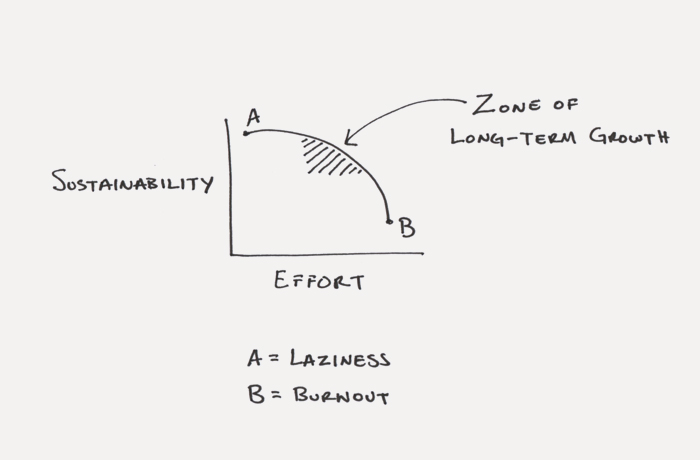Why Planning Small Instead Of Dreaming Big Will Lead You To Success
In 1996, Southwest Airlines faced an interesting problem.
During the previous decade, the airline company methodically expanded from being a small regional carrier to one with more of a national presence. At this point, more than 100 cities wanted Southwest expansions.
At a time when many airline companies were losing money or going bankrupt, Southwest was overflowing with opportunity. So what did they do?
Southwest turned down more than 95 percent of the offers and began serving just four new locations in 1996. They left significant growth on the table.
Why would a business turn down so much opportunity? And, more importantly, what can we learn from this story and put to use in our own lives?
What Is Your Upper Bound?
Starting in the 1970s, Southwest was the only airline company that made a profit for nearly 30 consecutive years. In his book, "Great by Choice," author Jim Collins claimed one of the secrets to Southwest’s success was the willingness of company leaders to set an upper bound limit for growth.
Sure, Southwest executives wanted to grow the business each year, but they intentionally avoided growing too much. The company leaders chose a pace they could sustain so the business could grow while maintaining the culture and profitability. They set an upper bound limit for their growth.
This is an approach that can be applied to nearly any goal, business or otherwise. Most people, however, tend to do the opposite and focus only on the lower bound.
An individual might say, “I want to lose at least 5 pounds this month.”
An entrepreneur might say, “I want to make at least 10 sales calls today.”
An writer might say, “I want to write at least 500 words today.”
A basketball player might say, “I want to make at least 50 free throws today.”
We tend to focus only on the lower bound: the minimum threshold we want to hit. And, the implicit assumption is, “Hey, if you can do more than the minimum, go for it.”
But, what would it look like if we added an upper bound to our goals and behaviors?
“I want to lose at least 5 pounds this month, but not more than 10.” “I want to make at least 10 sales calls today, but not more than 20.” “I want to write at least 500 words today, but not more than 1,500.” “I want to make at least 50 free throws today, but not more than 100.”
A Safety Margin For Growth

In many areas of life, there is a magical zone of long-term growth: Pushing enough to make progress, but not so much that it is unsustainable.
Take, for example, weightlifting:
Over the past year, I have slowly added 5 pounds to my squat every few weeks. A year ago, I started with a weight that was too light: 200 pounds for five sets of five reps.
Last week, I did 300 pounds for five sets of five reps. I never followed a magical program. I simply did the work and added 5 pounds every two weeks or so.
Sure, the lower limit was important; I had to keep adding weight in order to get stronger, but the upper limit was just as critical. I had to grow slowly and methodically if I wanted to prevent inflammation and injury.
There were plenty of days when I could have added 10 pounds — maybe even 15 pounds. But if I aggressively pursued growth, I would have quickly hit a plateau (or worse, caused an injury).
Instead, I chose stay within a safety margin of growth and avoided going too quickly. I wanted every set to feel easy.
The power of setting an upper limit is that it becomes easier for you to sustain your progress. And, the power of sustaining your progress is that you end up blowing away everyone who chased success as quickly as possible.
To put it another way, average speed wins.
Do Things You Can Sustain
There is a very simple way to put this idea into practice: let upper-bound limits drive your behaviors in the beginning and then slowly increase your output.
Say you want to start working out. Most people would focus on the lower limit and say, “I have to start exercising for at least 45 minutes on Monday, Wednesday and Friday.”
Instead, you could turn the problem upside down and say, “I am not allowed to exercise for more than 5 minutes on Monday, Wednesday and Friday.
By setting an incredibly easy upper limit, you make the process of getting started and sustaining your behavior much simpler. Once you establish the routine of doing your behavior over and over again, you can raise the limit as needed.
It is better to make small progress every day than to do as much as humanly possible in one day. Do things you can sustain.
James Clear writes at JamesClear.com, where he shares science-based ideas for living a better life and building habits that stick. To get strategies for boosting your mental and physical performance by 10x, join his free newsletter.
This article was originally published on JamesClear.com.
Thanks to Mitch for sharing the “Five Minutes In The Gym” idea with me and to Jake Taylor for telling me about "Great by Choice."